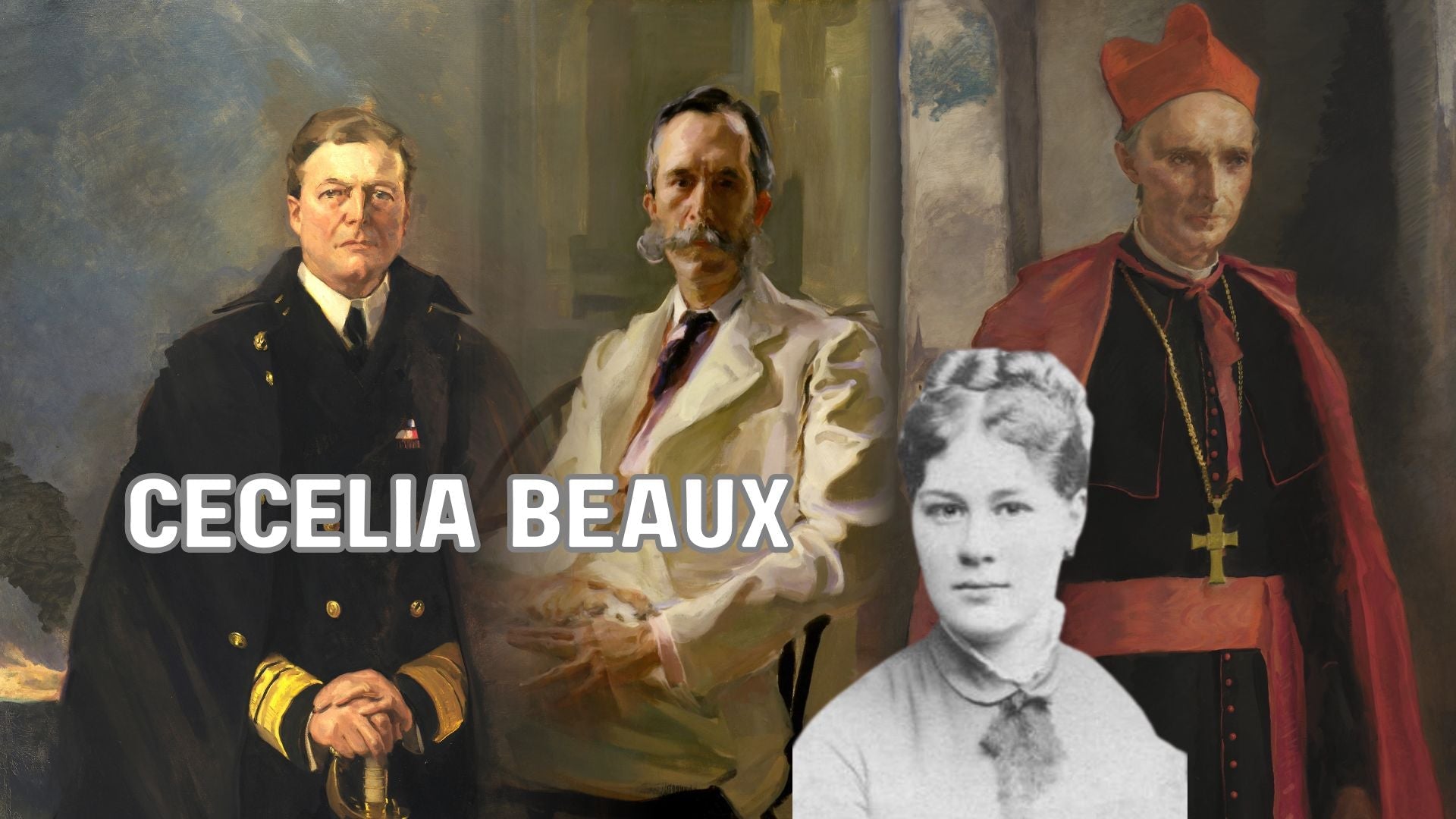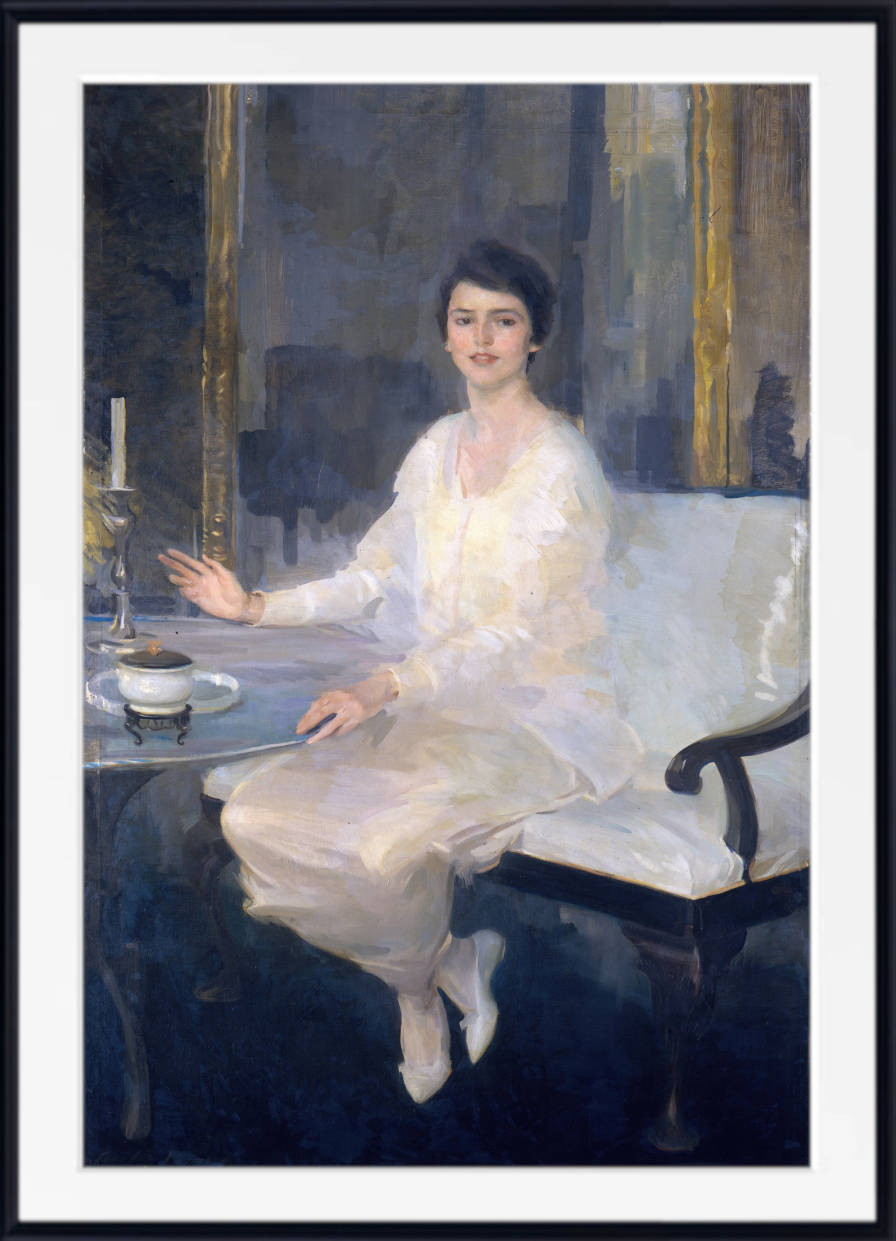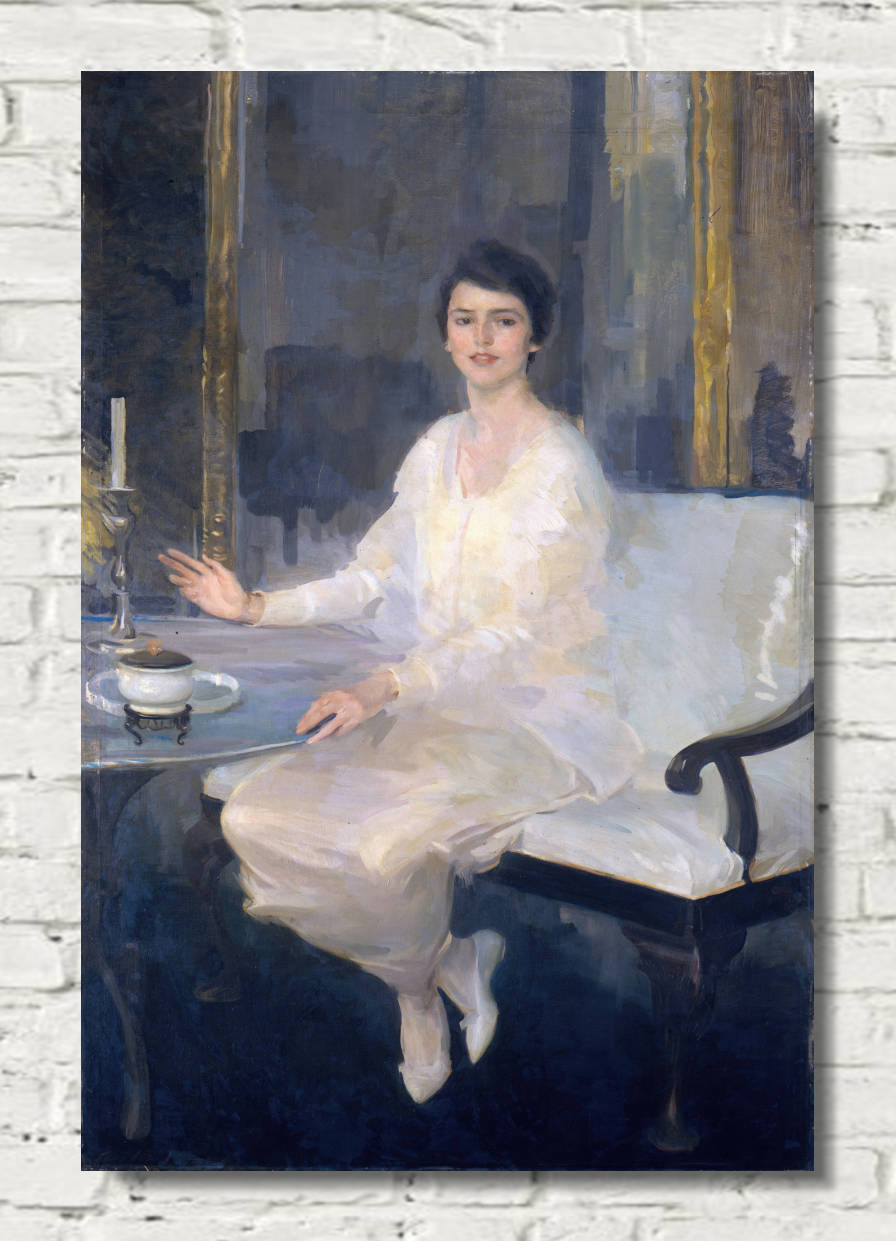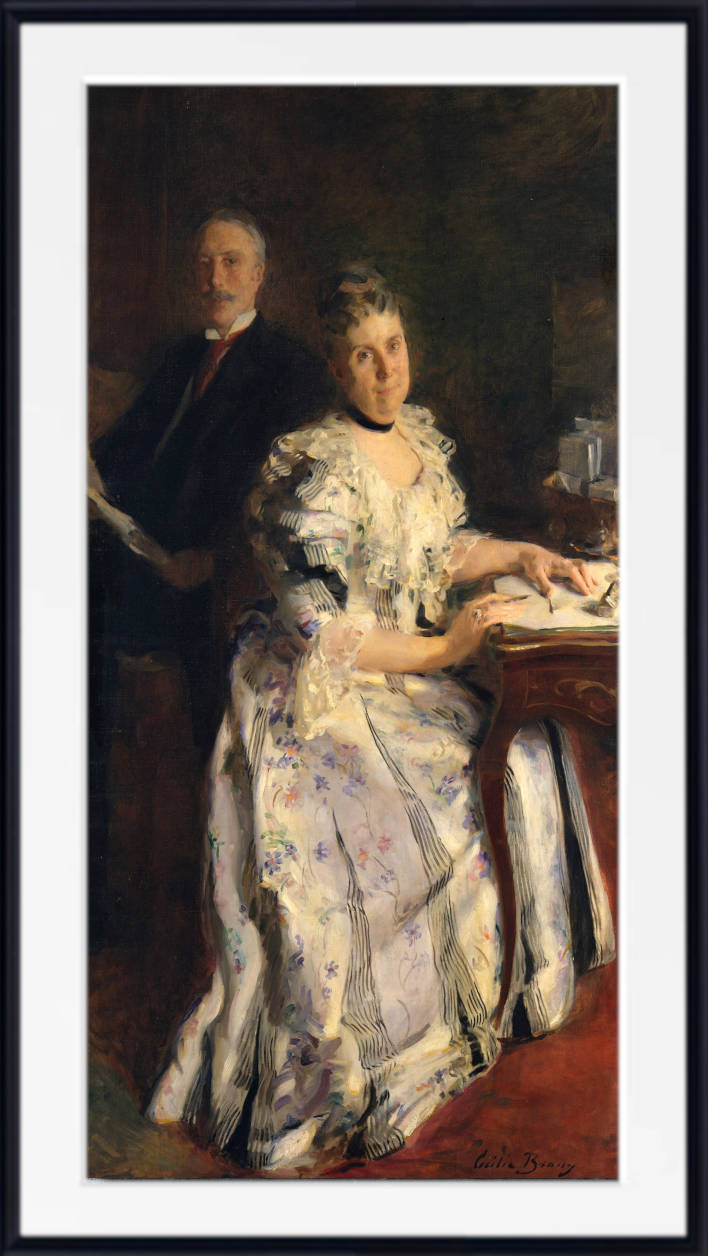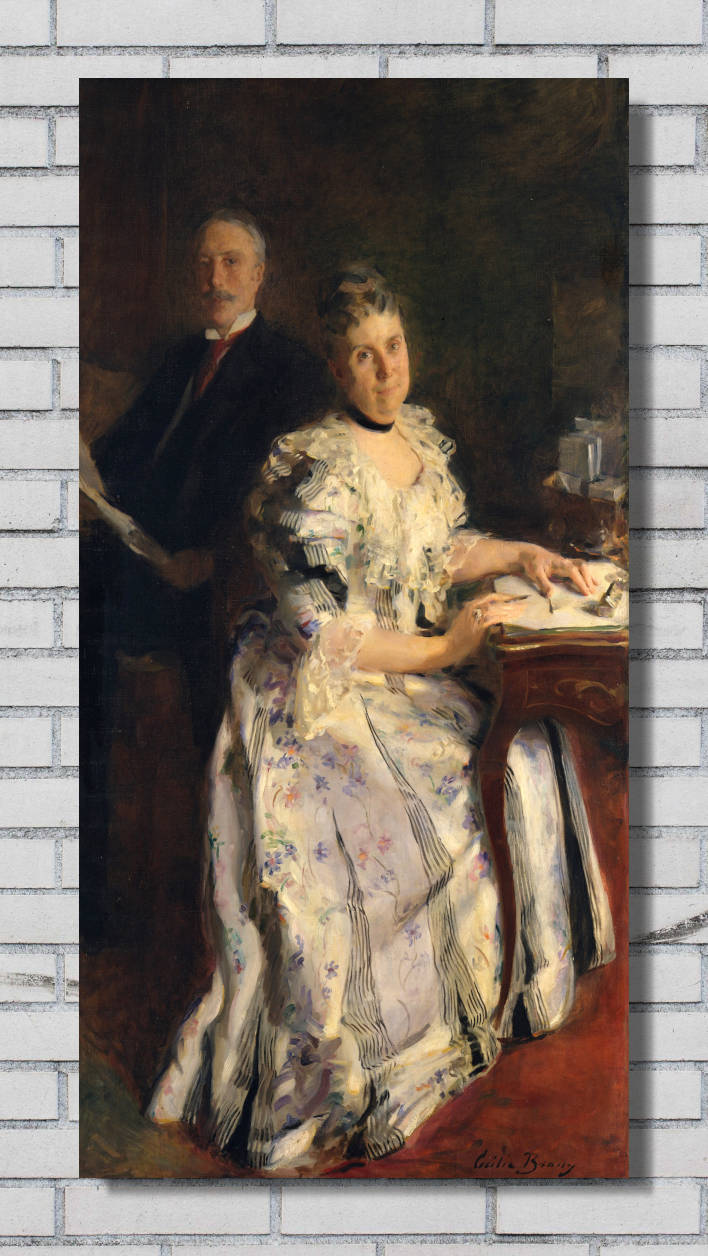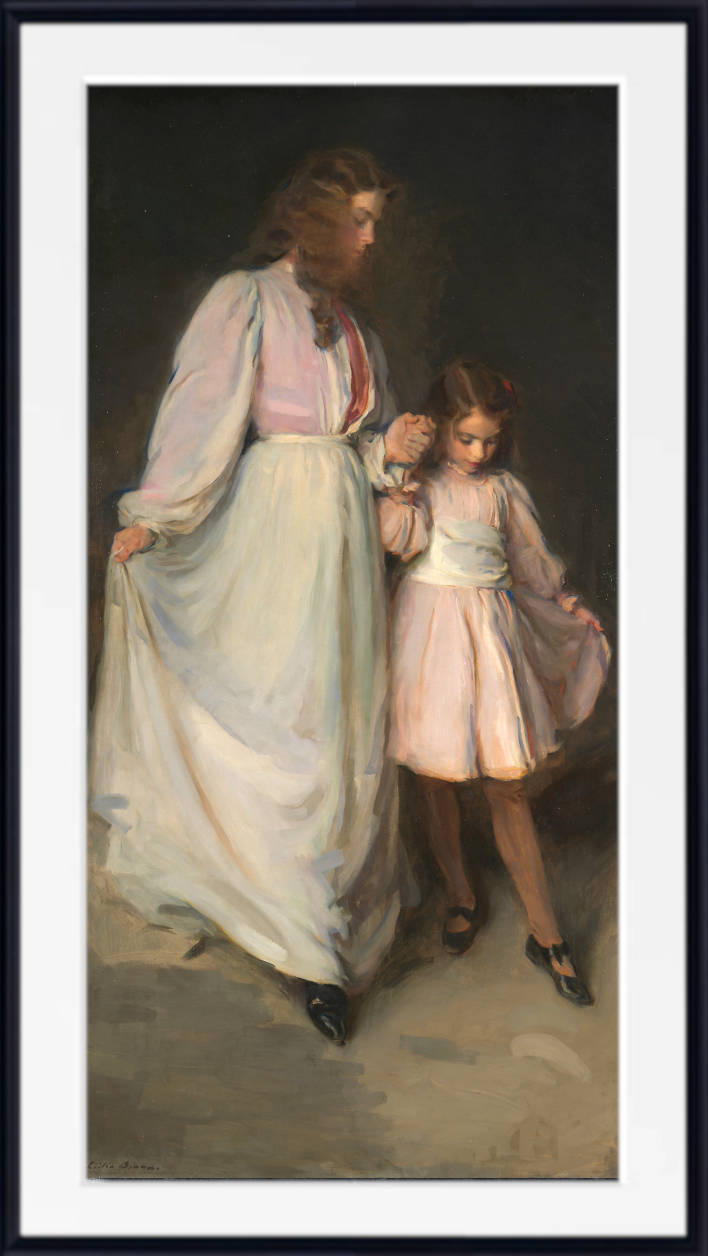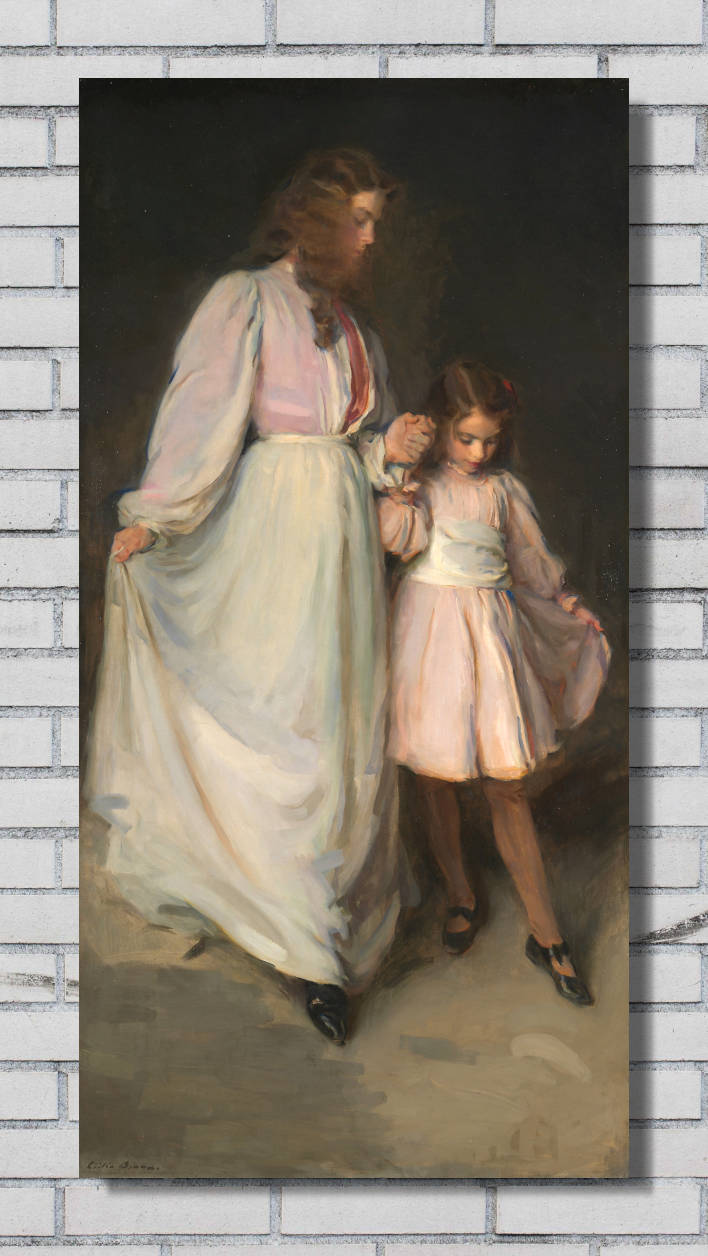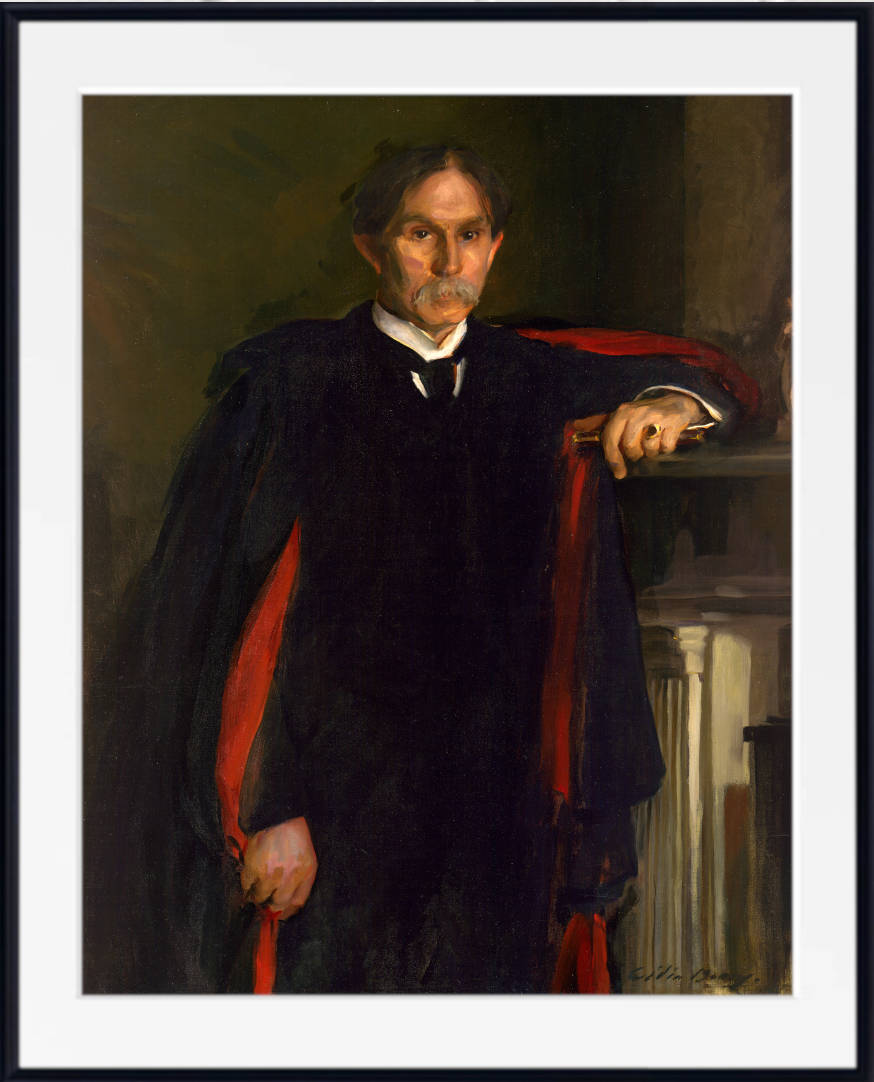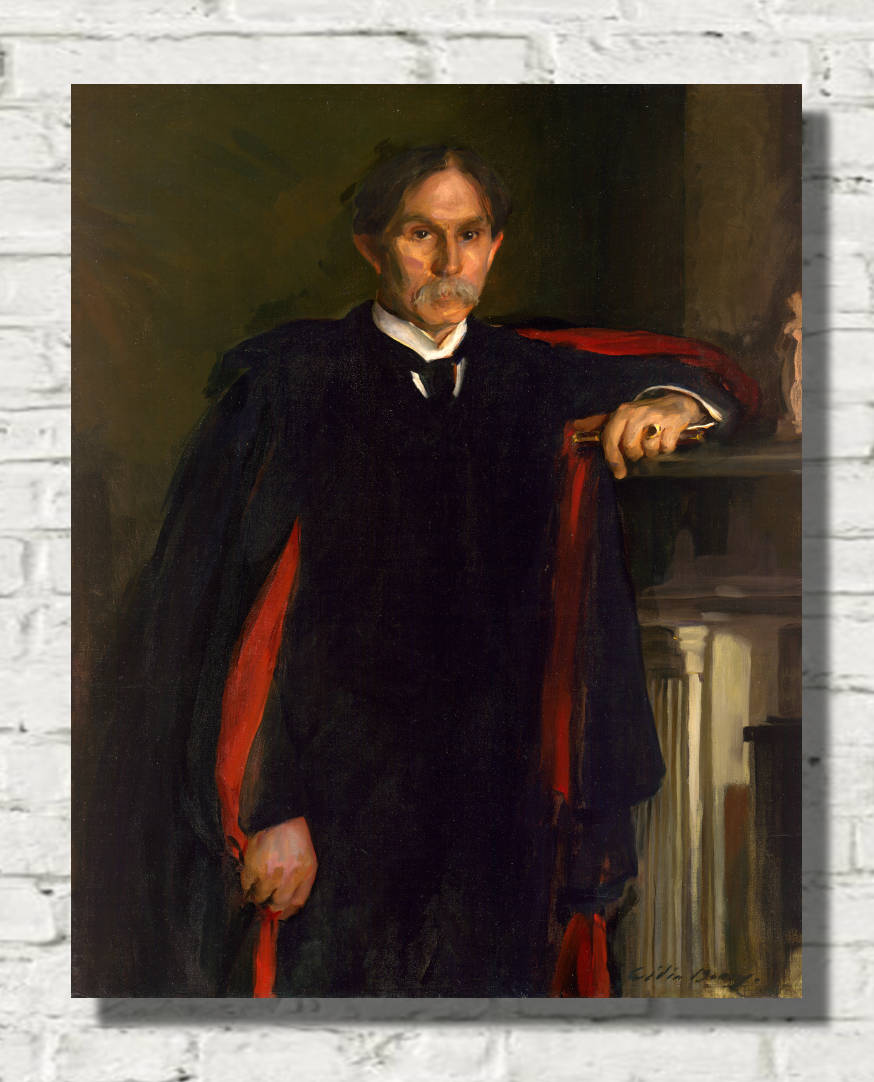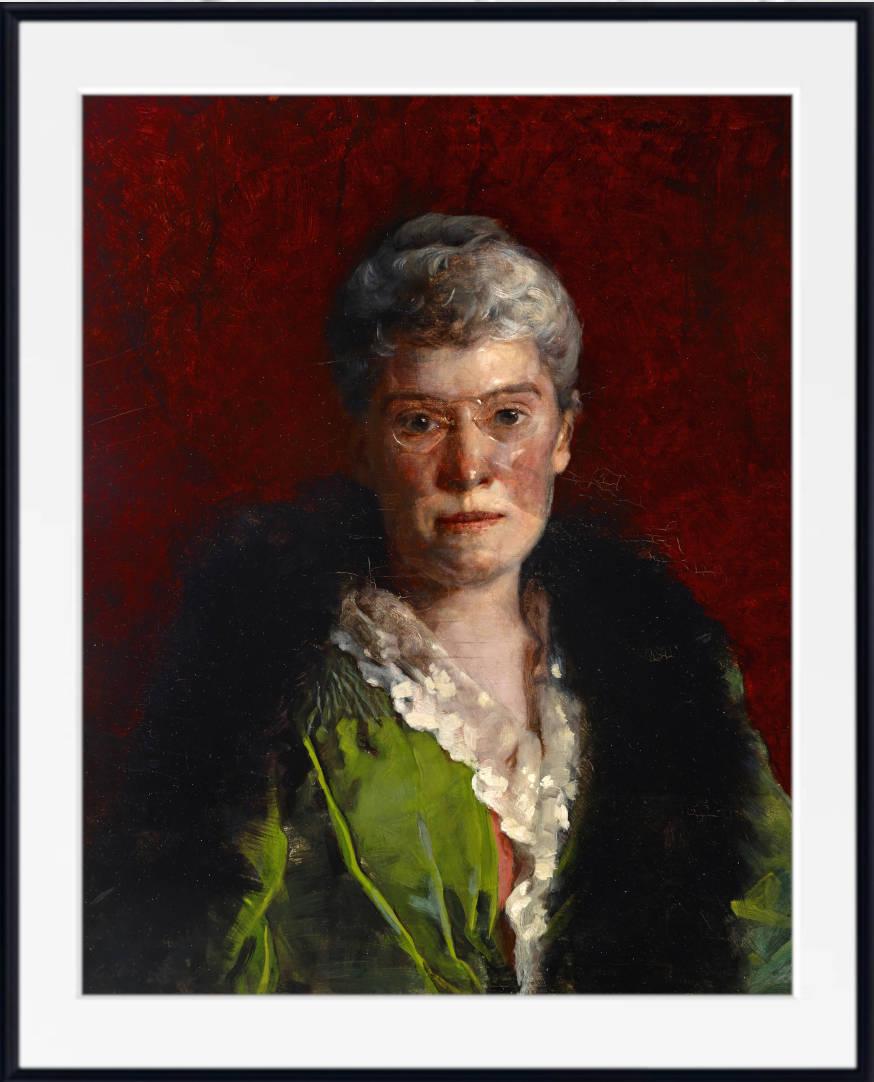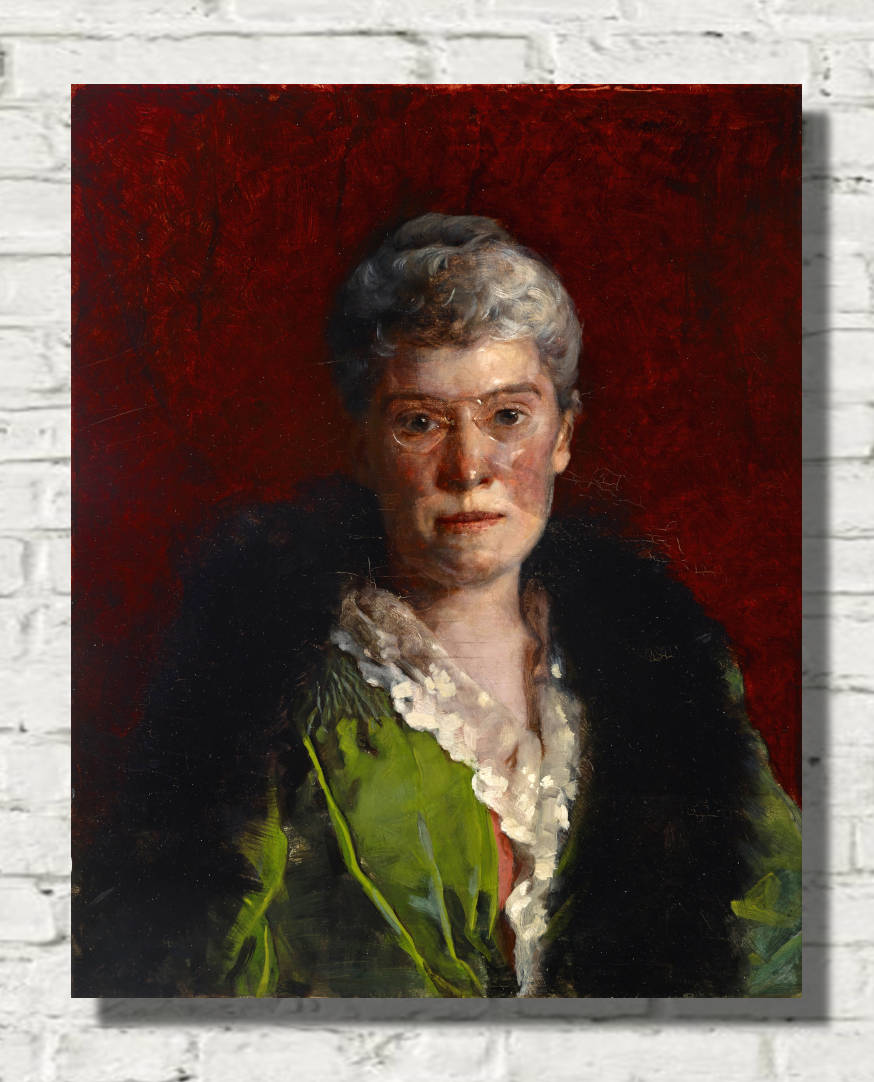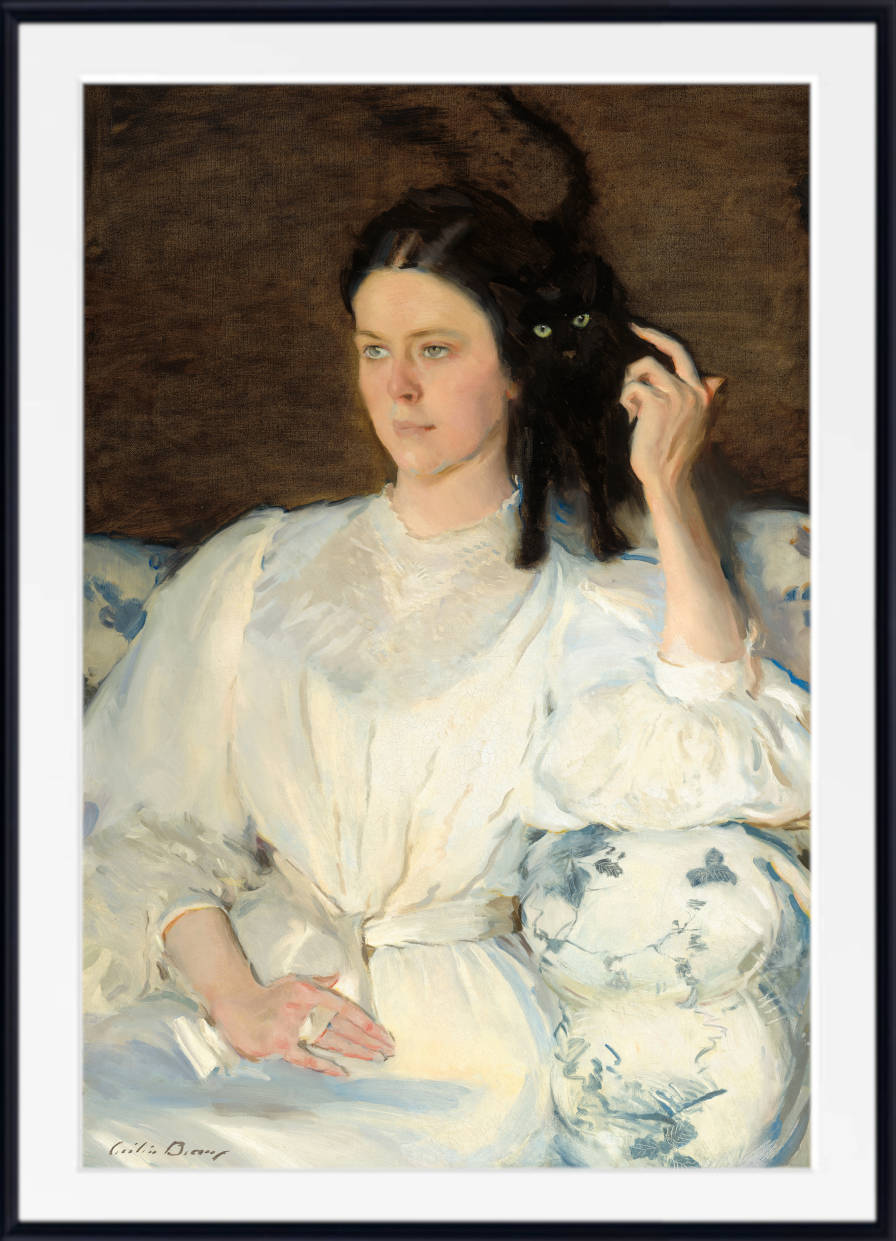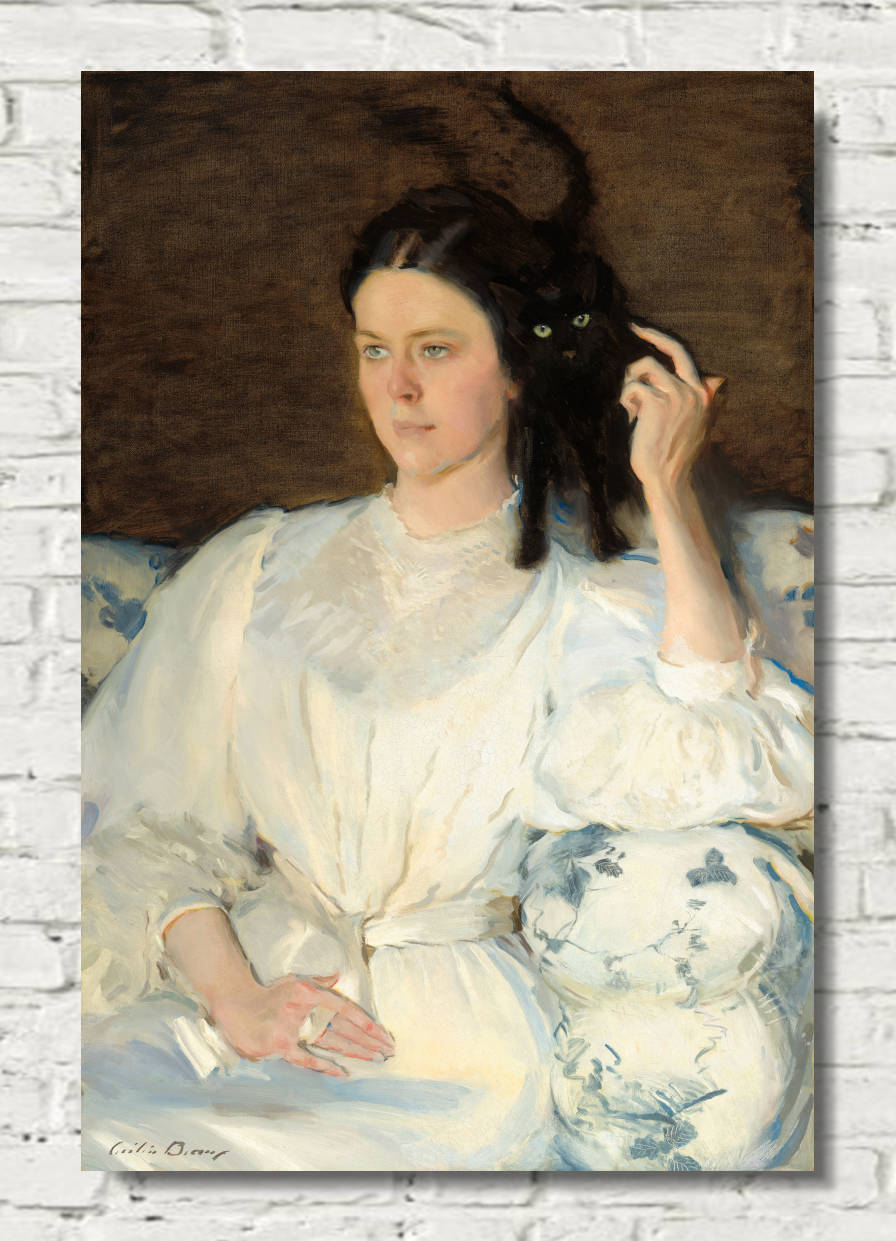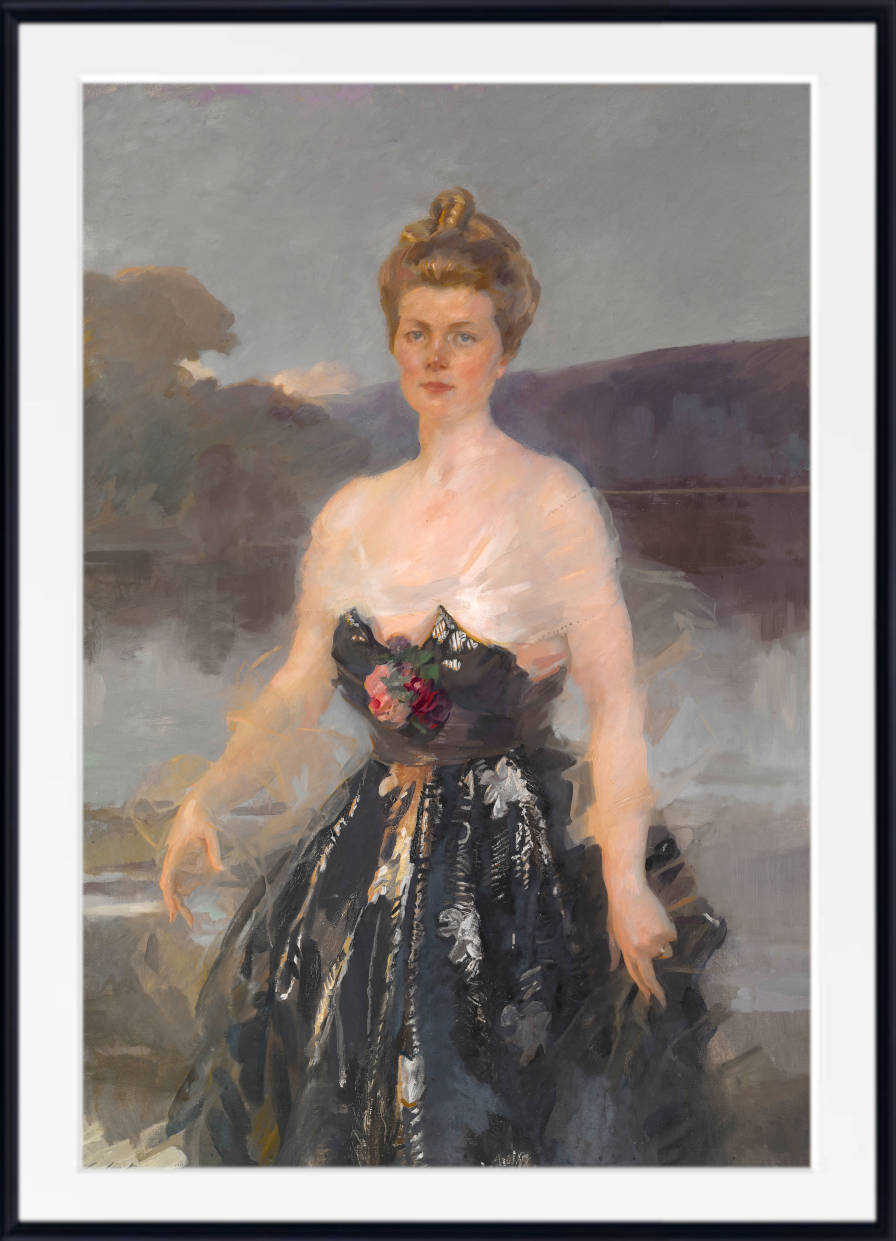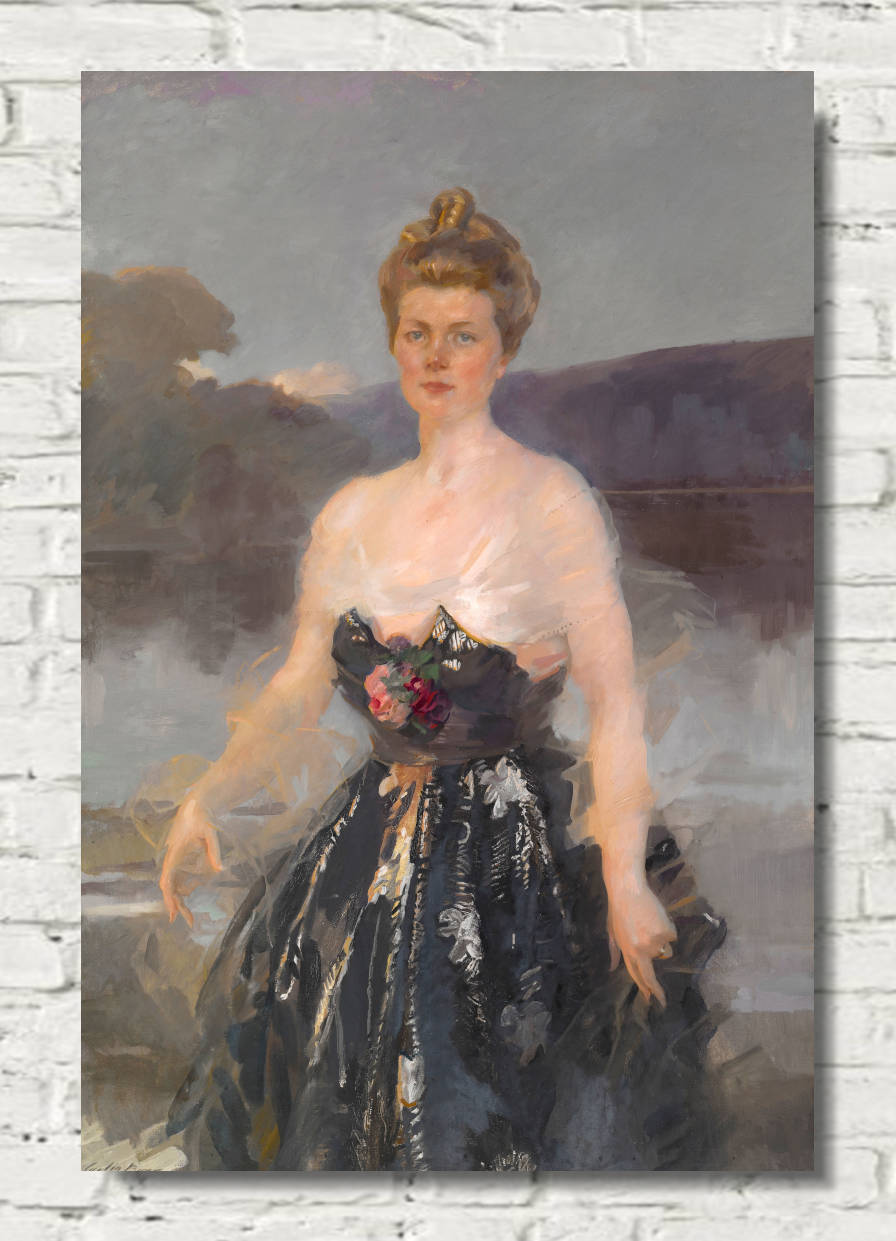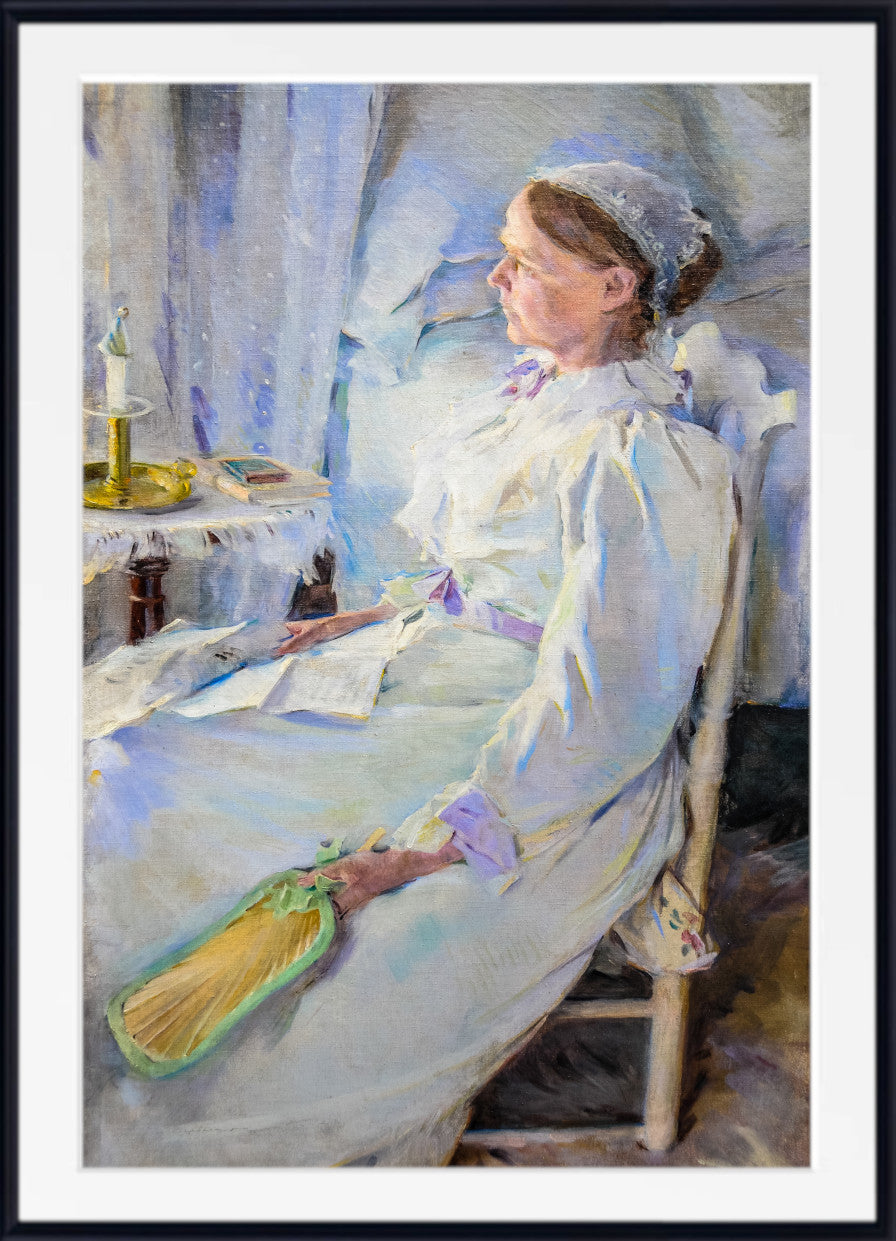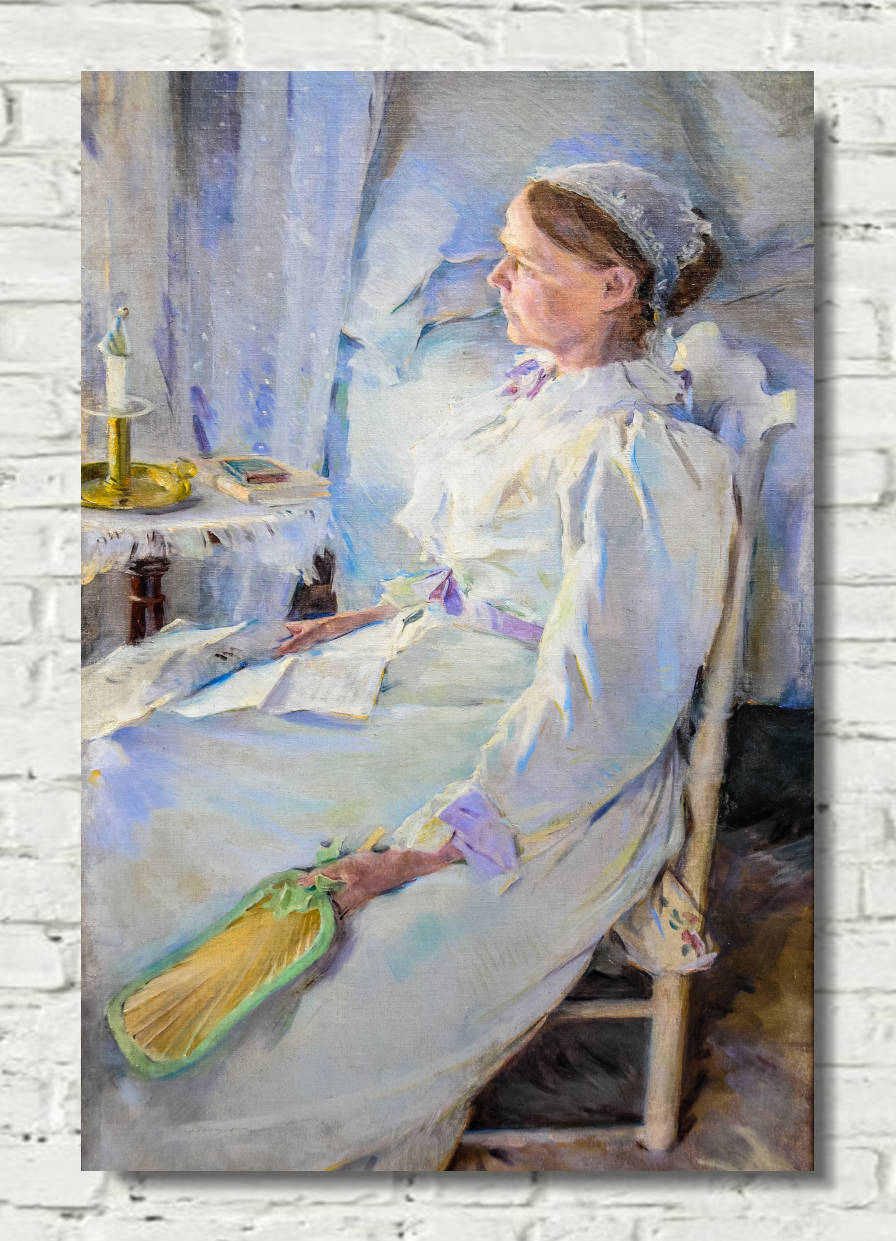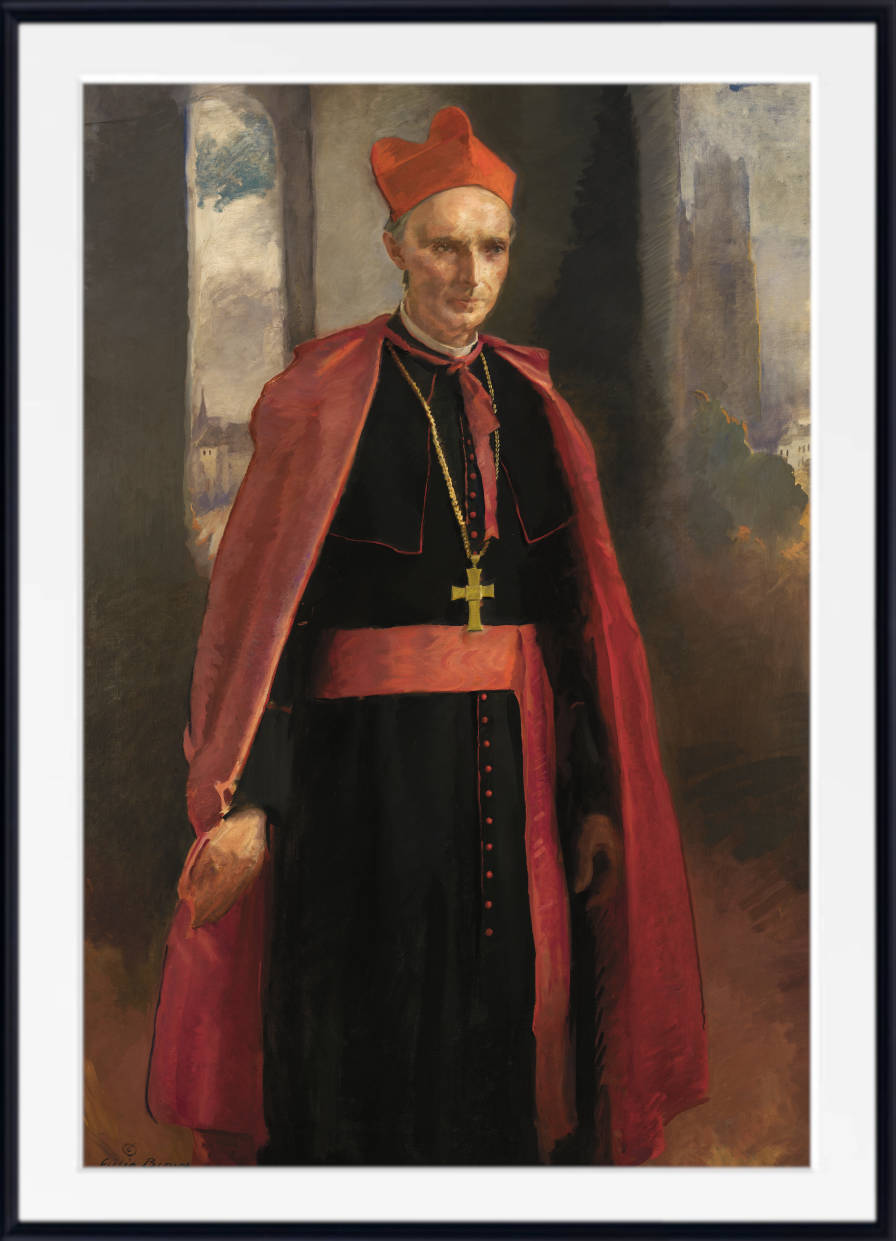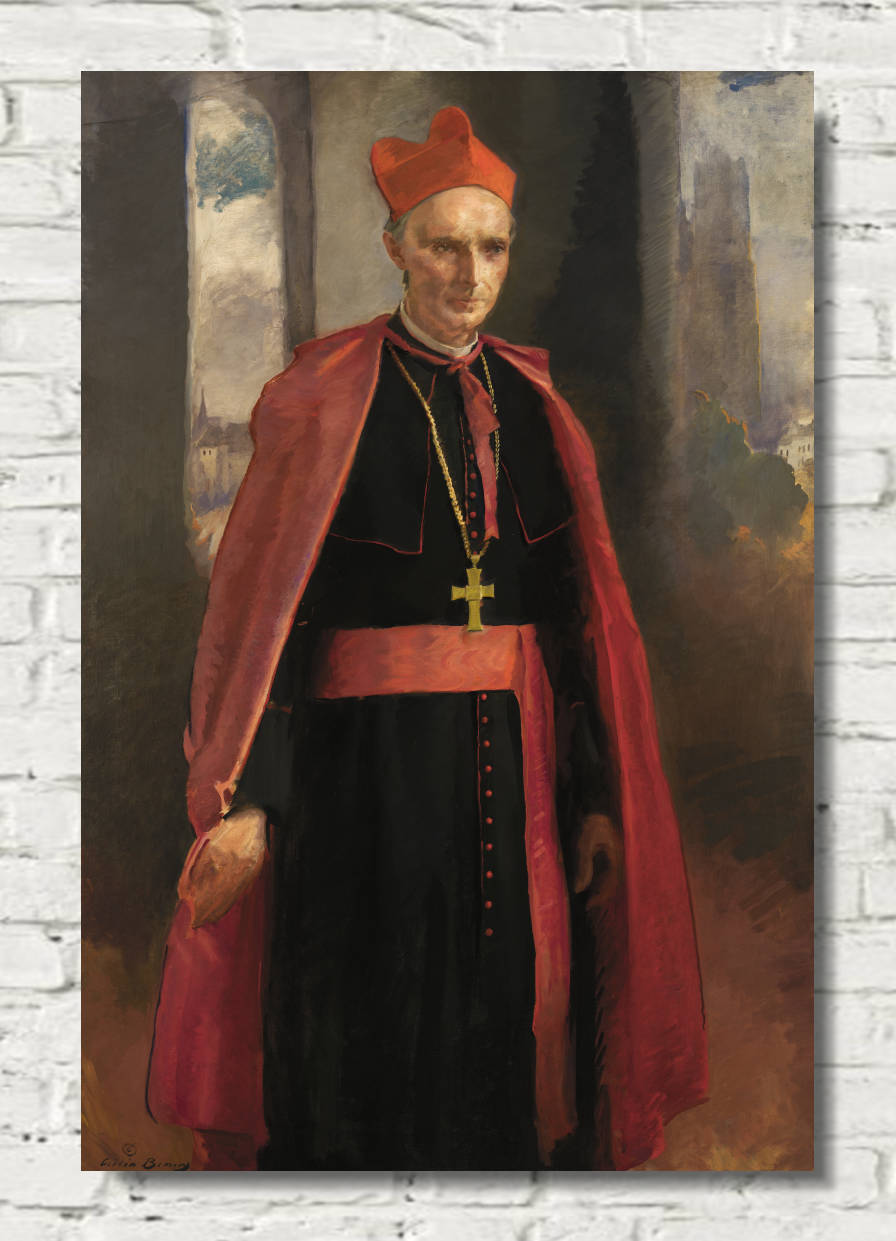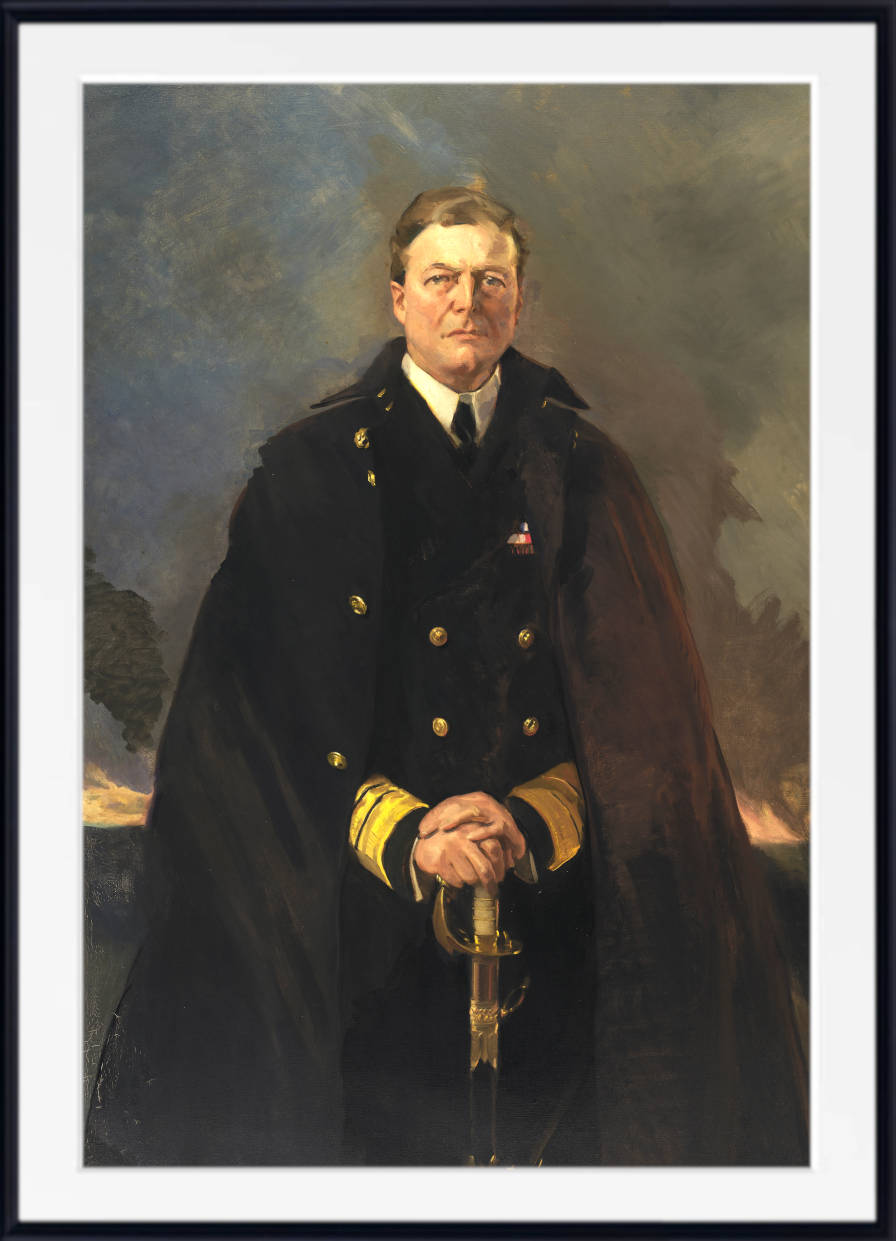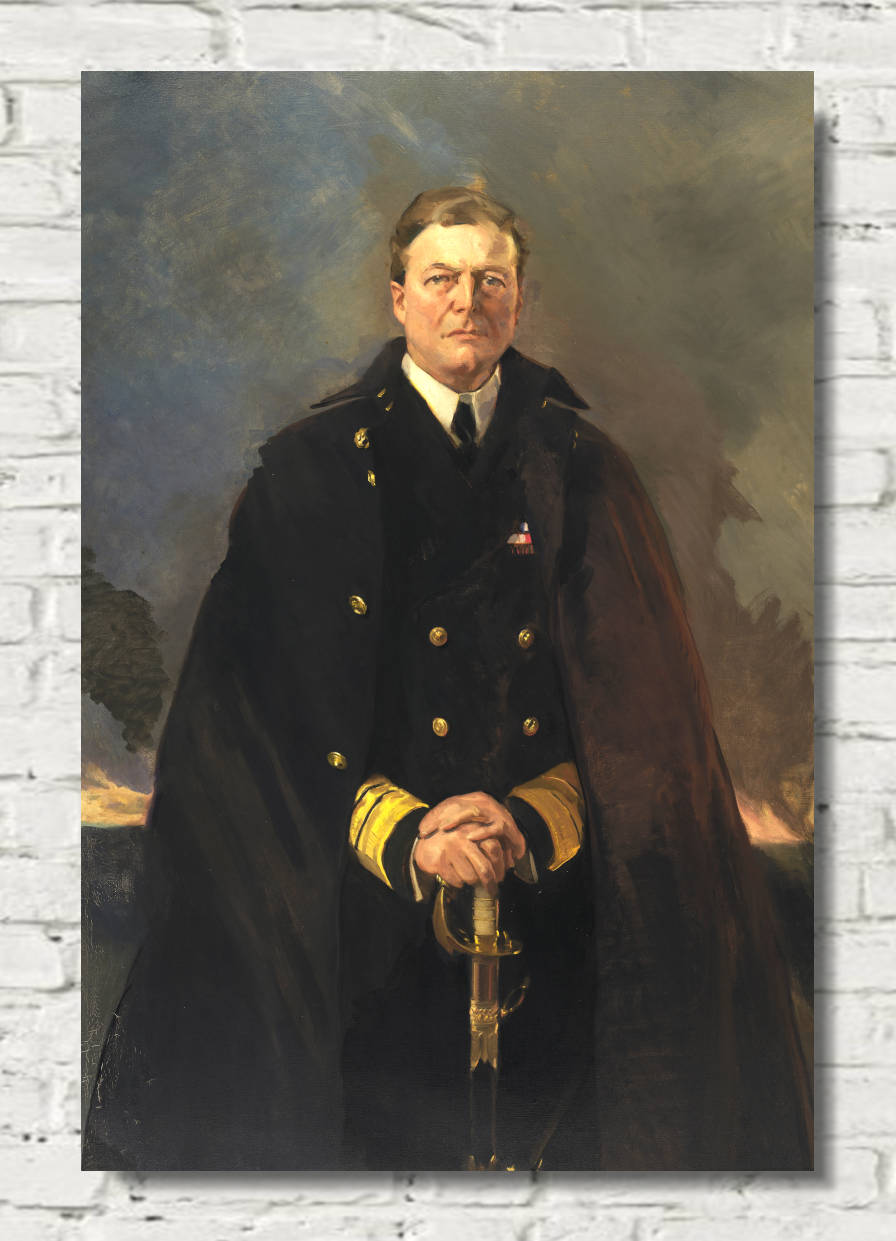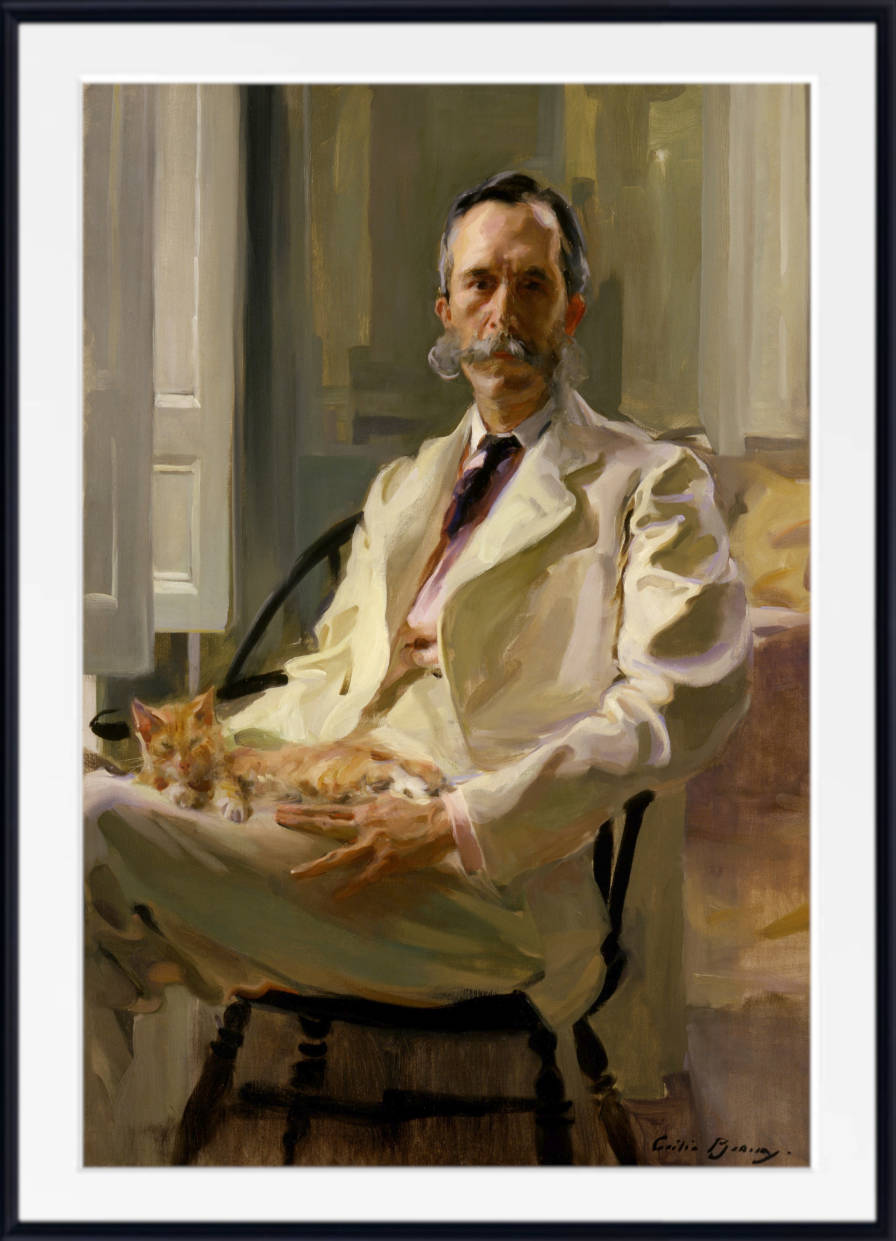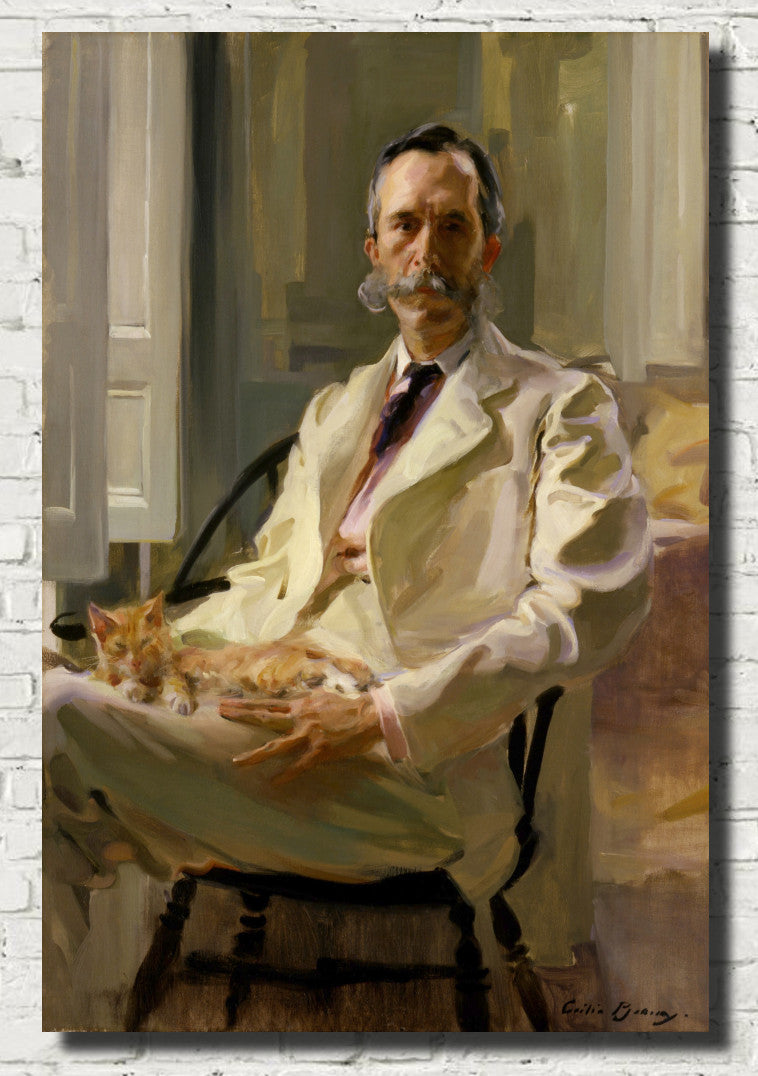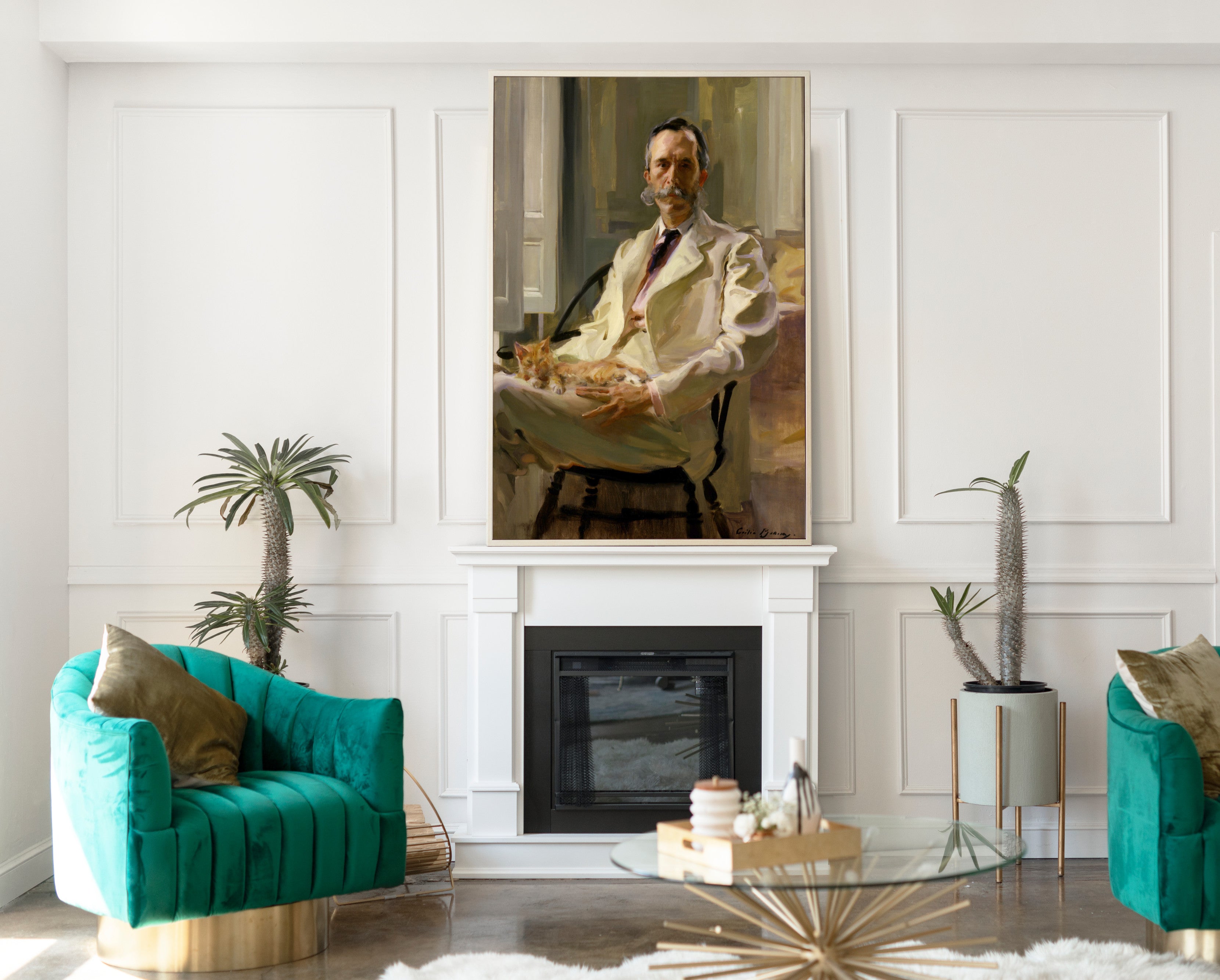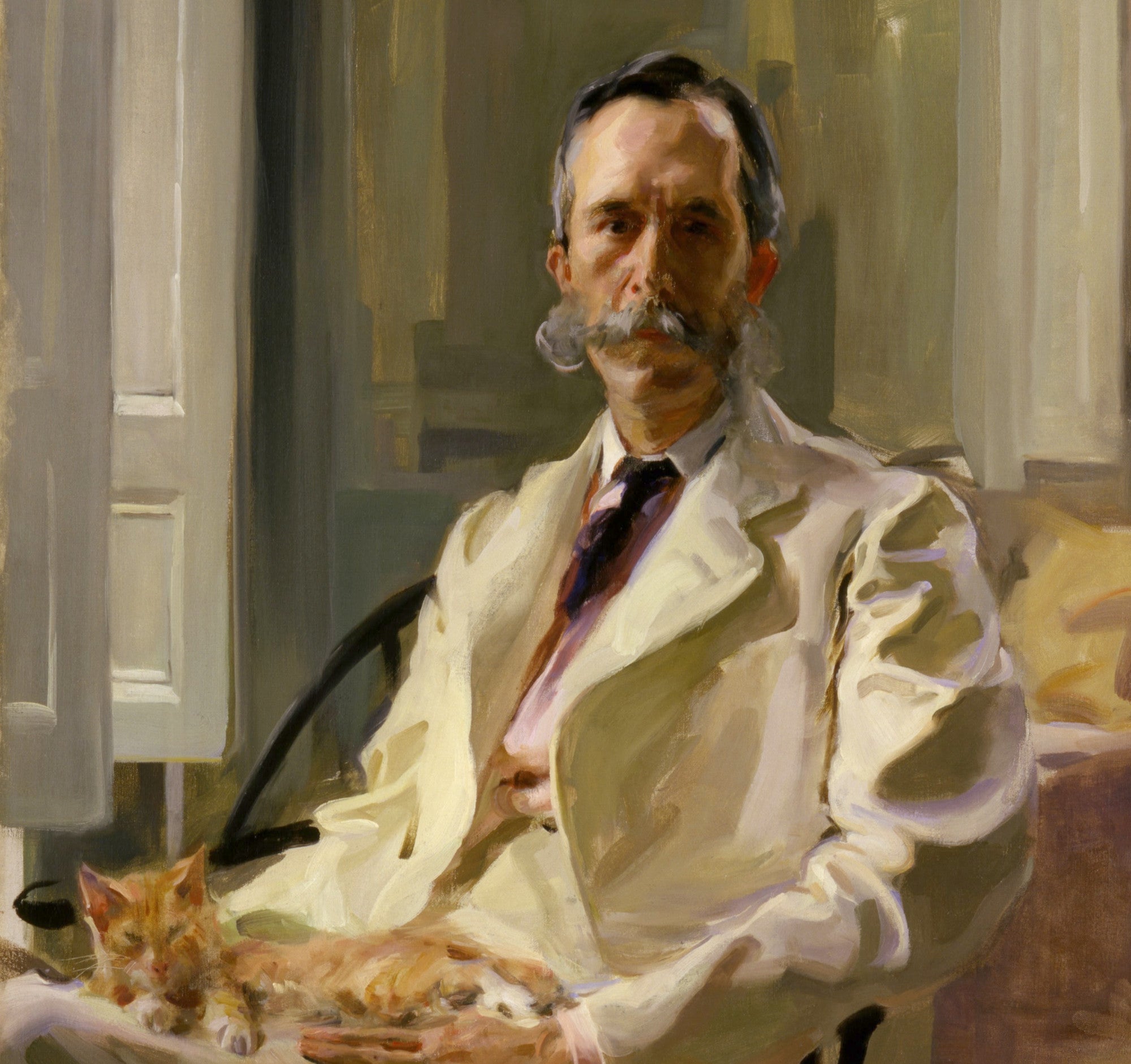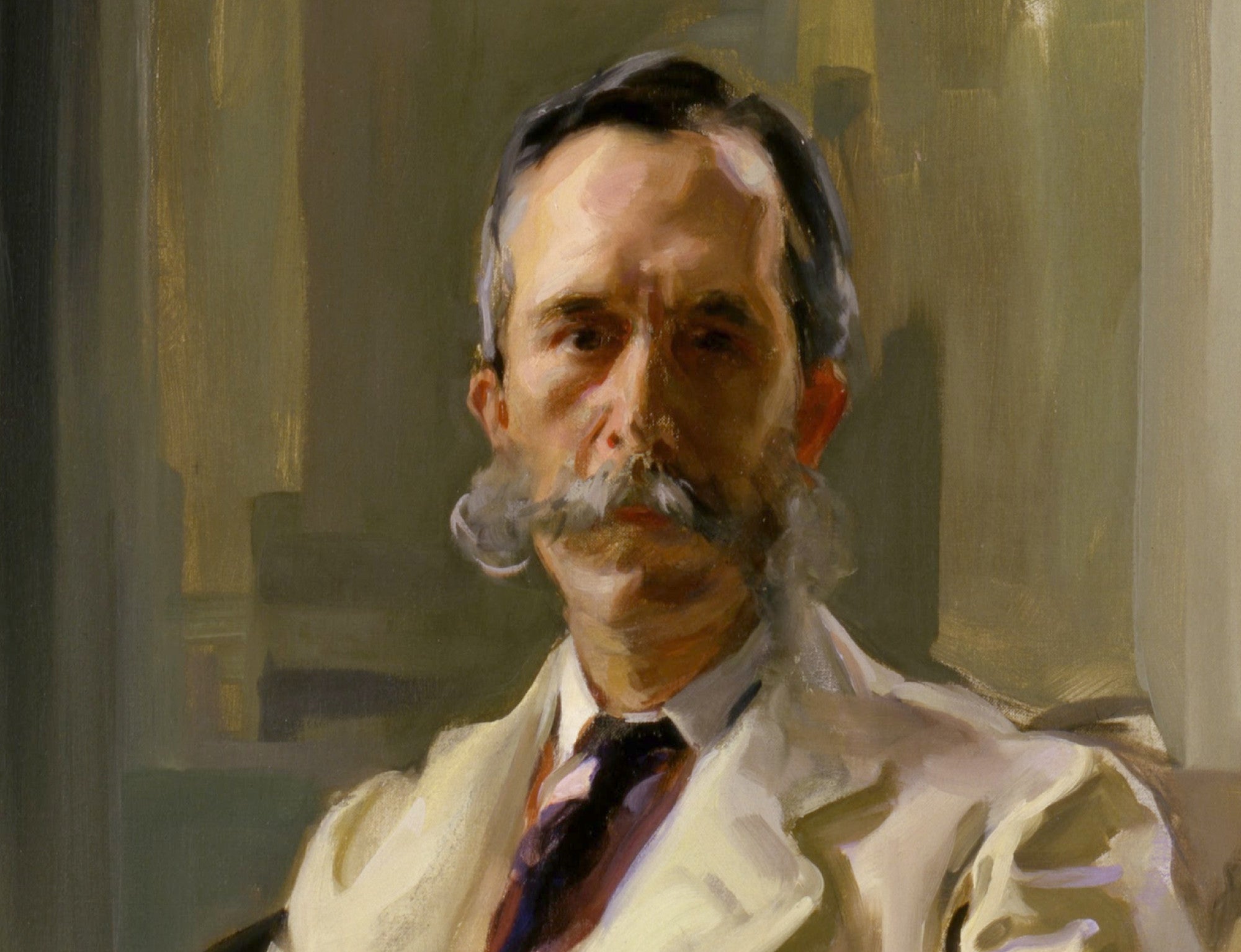Cecilia Beaux (1855–1942) was one of America’s most accomplished portrait painters, often compared to John Singer Sargent. With a refined technique that blended Impressionist influences with academic realism, Beaux created striking portraits that captured the personality and depth of her subjects. Her works continue to be celebrated for their exquisite use of light, texture, and composition.
Cecilia Beaux Biography
Cecilia Beaux was born in Philadelphia, Pennsylvania, into a family of French descent. Orphaned at a young age, she was raised by her grandmother and aunts, who encouraged her artistic pursuits. Beaux studied at the Pennsylvania Academy of the Fine Arts before traveling to Paris to further her education at the Académie Julian and under the guidance of renowned artists like Tony Robert-Fleury.
Despite facing gender biases in the male-dominated art world, Beaux achieved significant success. She became the first woman to hold a teaching position at the Pennsylvania Academy of the Fine Arts, and her work was exhibited internationally. Beaux’s clientele included prominent figures such as First Lady Edith Roosevelt and industrialist Henry Sturgis Drinker, solidifying her reputation as a premier portraitist.
Cecilia Beaux's Painting Style
Beaux’s painting style is characterized by a masterful blend of Impressionist light and academic precision. Her portraits often feature luminous, soft brushstrokes combined with a keen sense of realism, bringing out the individuality and character of her subjects.
Key Elements of Her Style:
-
Use of Light and Shadow: Beaux employed delicate light effects to enhance the depth and mood of her portraits, creating a sense of atmosphere and presence.
-
Refined Brushwork: Unlike the more vigorous strokes of some Impressionists, Beaux’s technique was controlled and graceful, achieving a polished yet expressive finish.
-
Emphasis on Elegance and Poise: Her subjects are often depicted with a sense of dignity and introspection, reflecting her keen psychological insight.
-
Subtle Color Palette: Favoring soft, harmonious hues, Beaux’s paintings exude a timeless beauty that distinguishes her work from both academic realists and pure Impressionists.
Notable Works
"Sita and Sarita" (1893)
This striking portrait features Beaux’s cousin, Sarah Allibone Leavitt, elegantly dressed in white, accompanied by a black cat perched on her shoulder. The contrast between the luminous, pale complexion of the sitter and the deep black of the feline adds to the dramatic yet refined quality of the painting. The work showcases Beaux’s ability to capture the complexity of human expressions, as Leavitt's composed and introspective gaze suggests an air of quiet confidence. The interplay of light and shadow on her flowing gown, combined with Beaux’s delicate brushstrokes, creates a sense of movement and depth that elevates the portrait beyond traditional academic portraiture.
"Man with the Cat (Henry Sturgis Drinker)" (1898)
In this intimate and revealing portrait, Beaux depicts her brother-in-law, Henry Sturgis Drinker, seated in a contemplative pose, accompanied by a small black cat. Unlike formal, stiff portraiture, this painting captures an unguarded moment of quiet introspection, emphasizing Beaux’s skill in psychological realism. The use of muted, earthy tones and gentle gradations of light lends a soft, harmonious quality to the piece. Beaux’s brushwork subtly renders the texture of Drinker’s clothing and the fur of the cat, while the loose yet intentional strokes reflect the influence of Impressionism in her technique. The work is a testament to her ability to convey both personality and atmosphere with remarkable subtlety.
"Dorothea and Francesca" (1898)
This double portrait of two young girls is one of Beaux’s most celebrated compositions, exemplifying her sensitivity in depicting childhood innocence and familial bonds. The two figures are positioned in an elegant, flowing composition, with soft lighting enhancing their youthful features. The painting’s warm, inviting palette, dominated by gentle shades of white and cream, evokes a sense of nostalgia and purity. Beaux’s masterful treatment of fabric and hair textures adds a delicate realism, while her impressionistic handling of light imbues the work with a dreamlike quality. The harmonious balance of form and color in this piece solidifies Beaux’s reputation as a master of nuanced portraiture.
Legacy and Influence
Cecilia Beaux’s contribution to American art remains significant, as she paved the way for female artists in the late 19th and early 20th centuries. Her works are housed in major institutions such as the Metropolitan Museum of Art and the Smithsonian American Art Museum, continuing to inspire artists and art enthusiasts alike.
If you appreciate elegant portraiture that captures both realism and artistic sensitivity, exploring the works of Cecilia Beaux is essential. Her paintings remain timeless masterpieces that celebrate the beauty and complexity of human expression.
Related Articles
American Impressionist Painters
Female Impressiomist Painters
References
Books on Cecilia Beaux's Biography and Artistic Career
-
Cecilia Beaux: A Modern Painter in the Gilded Age – Alice A. Carter
A comprehensive biography covering Beaux’s artistic journey, influences, and achievements in the male-dominated art world. -
Background with Figures: Autobiography of Cecilia Beaux – Cecilia Beaux
Beaux’s own reflections on her career, personal experiences, and interactions with fellow artists, providing a firsthand account of her artistic philosophy. -
Cecilia Beaux: American Figure Painter – Sylvia Yount
An in-depth study of Beaux’s place in American portraiture, with insights into her stylistic techniques and artistic challenges. -
Women Artists in America, 18th Century to the Present – Charlotte Rubinstein
A historical perspective on female artists, including Beaux’s role in shaping American Impressionist portraiture. -
Cecilia Beaux and the Art of Portraiture – Tara Leigh Tappert
A scholarly examination of Beaux’s approach to portraiture, featuring analysis of her most famous works.
Exhibition Catalogs and Museum Publications
-
Cecilia Beaux: Portrait of an Artist – Pennsylvania Academy of the Fine Arts
A catalog from a retrospective exhibition detailing Beaux’s artistic development, personal letters, and critical reception. -
Metropolitan Museum of Art Bulletin: American Women Artists – Metropolitan Museum of Art
Includes a discussion of Beaux’s work in the broader context of women artists in America. -
Cecilia Beaux: An American Painter in Paris – High Museum of Art
Focuses on Beaux’s Parisian studies and the European influences on her painting style.
Art History Books Featuring Beaux’s Paintings
-
American Impressionism – William H. Gerdts
Discusses Beaux’s relationship with American Impressionism and her divergence from more traditional Impressionist techniques. -
Painters of the American Gilded Age – Erica E. Hirshler
Provides insight into Beaux’s artistic peers and her role within the Gilded Age art scene. -
American Women Artists 1830-1930 – National Museum of Women in the Arts
Includes analysis of Beaux’s work alongside other influential female artists of her time. -
John Singer Sargent and His Circle – Trevor Fairbrother
Explores Beaux’s artistic relationship with Sargent and the shared stylistic elements in their portraiture.
Journals and Articles
-
"Cecilia Beaux’s Legacy in American Portraiture" – The Art Bulletin
A scholarly article analyzing Beaux’s contribution to American portrait painting and her influence on later artists. -
"Gender and Art: The Struggles of Women Painters in the 19th Century" – Journal of American Art
Discusses Beaux’s career in the context of societal expectations and gender barriers in the fine arts. -
"Cecilia Beaux’s Light and Color: The Influence of Impressionism on Her Portraits" – Smithsonian American Art Journal
Explores how Beaux integrated Impressionist techniques into her work while maintaining a unique identity as a portraitist.

